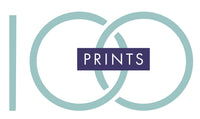 Vivian Maier Self Portrait, undated.
Vivian Maier Self Portrait, undated.
Highlighted by 100 Prints Blog this week, Vivian Maier wasn’t a professional photographer at all. In fact her work wasn’t seen or appreciated until after her death. Now known as one of the first and most significant street photographers of her time she spent her working life as a nanny in France, New York and Chicago, taking pictures as a hobby. She died at 83, almost penniless with no known family, leaving behind over 100,000 unseen films and negatives of her work. It wasn’t until after her death that they were declared one of the most interesting and remarkable collections of the 20th Century.




Maier was born in 1926 in New York to a French Mother and Austrian Father. Early life sees her living in New York with her mother and well-known photographer, Jeanne Bertrand, her father no longer listed at the same address following a divorce. In the years that followed there were frequent trips back to France & it was there in 1949 that she started experimenting with photography using a Kodak Brownie box camera bought with a small amount of money her grandmother left her.

Returning to New York in 1951, Maier carried on her career as a nanny and a year later managed to buy German-made Rolleiflex camera, travelling frequently to feed her inquisitive nature and document the world around her.
By 1956 she was living in the northern suburbs of Chicago, looking after the three young sons of the Gensburg family and, with her own private bathroom, set up a darkroom where she was able to process the multiple rolls of film taken snapping thousands of photographs of street life in Chicago. After the Gensburg children grew up and she moved on to other nanny positions, access to a darkroom was lost and rolls of undeveloped rolls started to pile up.

In the 70’s Maier switched to colour film, using a Leica camera and started to photograph still life and objects, a change from the years of black & white Street Photography that would eventually make her posthumously famous.
By the 1980s money was very low. More unprocessed films collect and by the end of the 90’s Maier put all her cameras, photographs and equipment into storage. There was a period of homelessness before the Gensburgs help her get back on her feet by paying for a small studio apartment for her. Eventually, after non-payment of rent, the storage company auctioned off her locker contents, including negatives and prints & this is where the story gets interesting.

In 2007, John Maloof, an artist and estate agent was, writing a book with friend and fellow historian, Daniel Pogorzelski, on Portage Park in Chicago. Finding a box of negatives at an auction, in which there were countless of Chicago, he decided to buy the box, hoping to use some of the images for his book, taking a chance on their quality and not knowing anything about the photographer. Once he’d viewed the images and realised there was something special about them, he set about buying up more of the boxes from other people who had also purchased them at the auction. To date its believed he owns over 100,000 negatives or 90% of Maier’s known work.

This began a love affair with the Vivian’s work and her story which would lead him to make a film, ‘Finding Vivian Maier’, after researching her history and tracking down employers, friends and distant family at his own expense. He also spent thousands on scanning equipment to bring the negatives to life as prints. It was his hard work, research and curation of the collection that led to the discovery of a story that has captivated the art world for several years.
Initially, prominent galleries refused exhibitions on grounds that the photos were of average quality, but having posted some of his favourites on Flickr in 2009, thousands of people expressed interest and offers to exhibit them came rolling in. He set up the first Maier exhibition in 2010, since then the work has been shown globally to enthusiastic crowds.

There’s been legal battles around copyright ownership, lost relatives tracked down, deals made and exhibitions left in limbo whilst the case played out.
But for now, with all that resolved, we’re just grateful to John Maloof for finding the box of negatives and caring enough about great photography to catalogue the collection and bring it to the world.
Its a lovely and intriguing story, too much to bring to life here on our blog. If you want to read more, we've listed useful links below.
For more of Vivian's images, visit our Street Photography Pinterest Board.
You can read more about Vivian Maier in these articles:
About her early life and family: Vivian Maier Developed by Ann Marks.
About the legal battle that ensued: The Heir’s Not Apparent: A Legal Battle Over Vivian Maier’s Work by The New York Times
About the resolution: Fight over Vivian Maier's photos settled, but deal sealed from public from The Chicago Tribune
For Black & White Photography at 100Prints.co.uk, visit our Black & White Collection.
